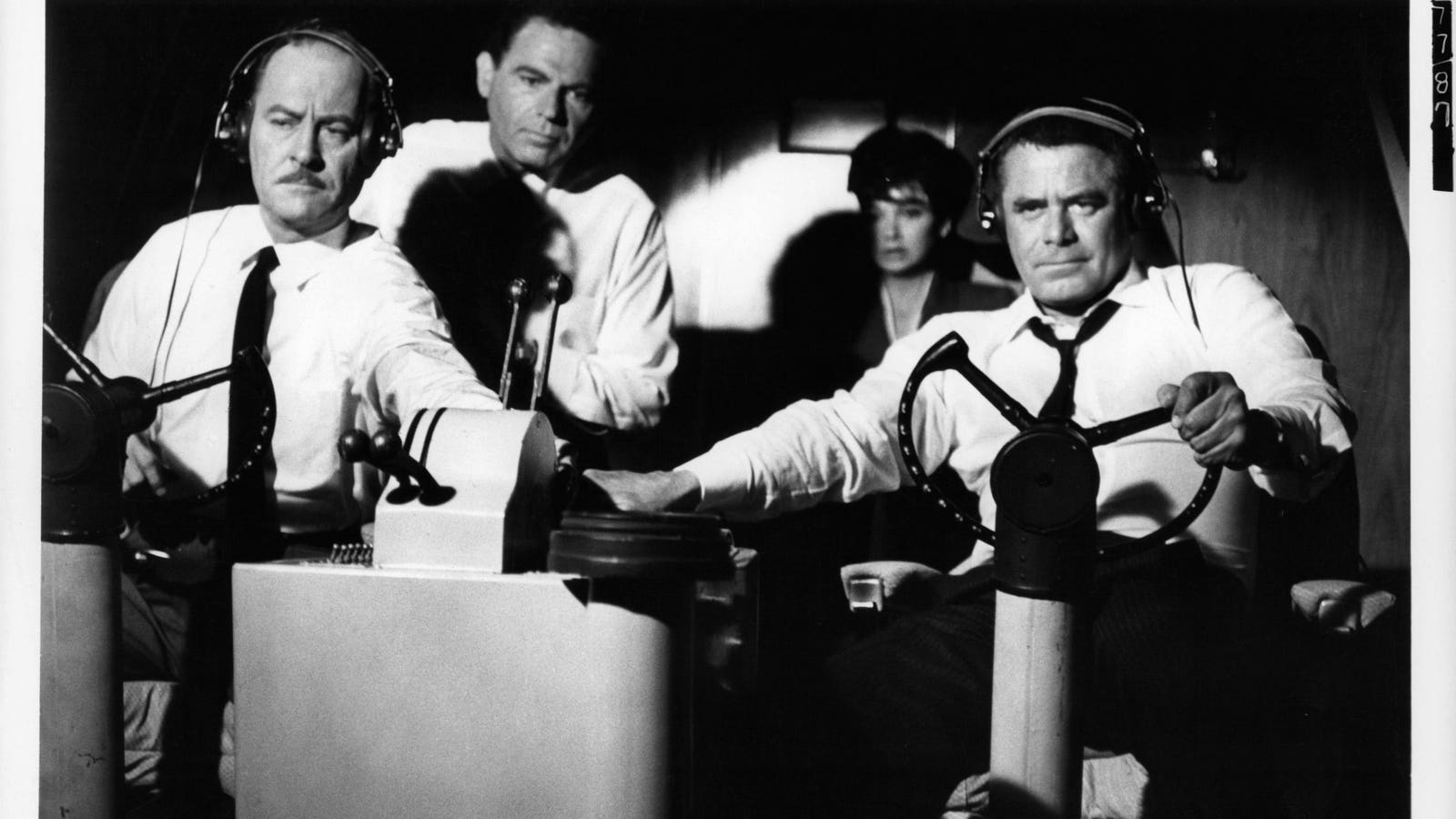Pilot and Glenn Ford handle controls while Suzanne Pleshette sits in the background in a scene from the film ‘Fate Is The Hunter’, 1964. (Photo by 20th Century-Fox/Getty Images)
Getty Images
I remember as a youngster watching the 1964 movie, “Fate Is The Hunter.” In it, the air crew of a commercial jetliner attempts to reenact a plane crash that killed all 53 aboard. A thorough CAB investigation had yielded no known cause.
During the dramatic reenactment, which put everything in place exactly the way it was for the original flight (other than the same crew, of course), the aircraft experiences a similar mysterious malfunction at the same spot in flight as the original. The pilots suddenly can’t control the plane.
An air of spookiness permeates the flick until, at the last minute, one pilot spots a spilled cup of coffee on the aircraft console. The liquid had shorted out the plane’s electrical system, convincing the crew that one of the plane’s engines was inoperable. Just before the final death spiral, though, the pilots realize the problem and corrected it by restarting the suspect engine and landing safely.
My takeaway: You are only as good as your weakest link, in that case a spilled cup of coffee, and that a small misstep in the air can be fatal.
NEW YORK, NY – OCTOBER 23, 2012: Austrian skydiver Felix Baumgartner meets with UN Secretary-General Ban Ki-moon at United Nations headquarters. Baumgartner jumped out of a balloon from 128,000 feet above New Mexico, breaking the record for the highest ever freefall, and was the first skydiver to break the sound barrier. (Photo by John Moore/Getty Images)
Getty Images
Fate is the hunter can apply in real life, too, though in slightly different ways. But it will bite you just the same. Take four famous aviators who died in fairly mundane ways in small aircraft.
The recent passing of Austrian daredevil Felix Baumgartner, 57, is a good example. In 2012, the parachutist famously jumped from the edge of space, some 128,000 feet up, in a Red Bull helium balloon, breaking the sound barrier and the world record of 102,800 feet set in 1960 by USAF Col Joe Kittinger.
Baumgartner was also famous for dangerous helicopter stunts over the Alps, and as a serious base jumper. Imagine the world’s surprise when he perished in July of this year on a simple hang-gliding flight over Italy. Investigators suspect heart failure.
Apollo 8 – NASA, 1968. Earthrise, taken on December 24, 1968, by Apollo 8 astronaut William Anders. Artist NASA. (Photo by Heritage Space/Heritage Images via Getty Images)
NASA/Heritage Images via Getty Images
In 2024, Apollo 8 astronaut Bill Anders crashed his vintage T-34 performing simple maneuvers over the waters of the Puget Sound. Now this guy had orbited the moon in 1968 and taken the famous “Earthrise” photo! What an unexpected way to go.
In 2007, balloonist Steve Fossett on a routine solo flight from Nevada to California crashed his single-engine plane, killing himself. Fossett was famous for daredevil stunts and several world records in extreme sailing and piloting. He is best known for being the first person to circumnavigate the globe solo in a balloon, in 2002. Investigators suspect he may have run out of fuel.
NORTHAM, AUSTRALIA – AUGUST 5, 2001: American billionaire adventurer Steve Fossett, 57, waves goodbye as he sets off on his sixth attempt to orbit the globe alone in a balloon. (Photo credit should read THIERRY BOCCON-GIBOD/AFP via Getty Images)
AFP via Getty Images
Finally, there’s pilot Gary Powers who infamously was shot down in 1960 at 70,500 feet by a Soviet surface-to-air missile while spying over enemy territory in a U-2. Afterward, he survived as a prisoner of war in the former Soviet Union until President John F. Kennedy brought him back to the U.S. via a prisoner swap. In 1977, while reporting on wildfires for a local TV station near Los Angeles, he ran out of fuel and crashed in a small helicopter.
The irony here, of course, is that all of these aviation icons had risked their lives in extremely dangerous situations only to be befallen by fairly routine things in the air that mere mortals take for granted.
U-2 spy plane pilot Francis Gary Powers with his flight helmet at exhibition of U-2 plane wreckage and other evidence related to his Moscow trial, Russia, 1960. (Photo by: Sovfoto/Universal Images Group via Getty Images)
Universal Images Group via Getty Images
Before each passed, I had the opportunity to interview them, except for Powers, although I did chat with his son, Gary Powers, Jr. All to a T, at least to this reporter, seemed careful and detailed-oriented, and in no way reckless.
If you’re a pilot, always be vigilant. There are no second chances in the air except in the movies. A simple malfunction is not like one on the highway in an automobile. Disaster can strike anywhere. Make sure your prayers are up to date. Fate, indeed, can be the hunter.

